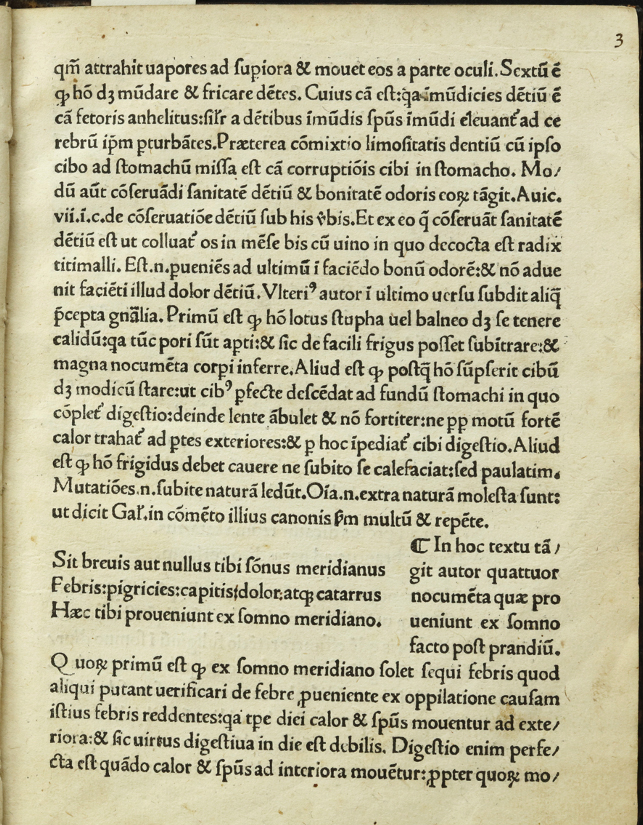Do you leave marks on your books? Maybe underline a few key words, put an asterisk next to an important passage, or jot down a quick summary of a point you want to remember? If you do, no worries – people have been writing in their books for centuries! Today, we’re going to look at some of the ways readers of the past have interacted with books held in special collections.
The first item we’re looking at is a 1500 edition of the Salernitan Regimen of Health printed in Venice. Books printed prior to 1501 are known as incunabula, from the Latin word for “swaddling clothes,” and are considered examples of the earliest stage of book printing in the West. Many incunabula lack some of the features we take for granted today, like title pages with complete bibliographic information or even pagination. But if you look closely at the image below, you’ll notice that a previous owner went through and numbered the leaves by hand.

They also took the liberty to create a handwritten index!

The next set of images come from a 1634 edition of the Salternitan regimen. The first is an example of a manicule (Latin for “little hand,” for obvious reasons), one of the most charming ways early modern readers marked their books. Manicules point to some aspect of the text the reader found important—in this case, knowing where to find information on wine.

On another page, you can see that the reader summarized key points in the margins.

Sometimes books were intentionally designed to be written in. For example, our 1719 edition of Mary Kettilby’s work on cookery and medicine was published with leaves that were deliberately left blank. The idea was that the owner would have space to write down their own recipes and remedies. You can see that that’s exactly what this previous owner did – they’ve written their own recipe for pickled mackerel on the page opposite Kettilby’s printed recipe.

And sometimes, of course, readers just want to doodle in their books, like this one-time owner of John Bulwer’s Anthropometamorphosis who couldn’t resist adding hats and pipes!

The marks readers left on books help librarians and researchers answer important questions about how books were used by the people who owned them. Did they remain in pristine condition, as if they were collector’s items? Was the owner adding features to make the book easier to use? Or were they simply feeling playful? These kinds of details help us learn more about a book’s story over the years.
And while you should certainly feel free to leave marks in your books, never add any to books that are already in special collections!
